Ground electricity distribution postToday, electrical energy, as an inseparable part of human life, plays the most important role in the world industry cycle. In fact, it can be said that today the electricity industry is considered as one of the important indicators of economic, social and cultural development. Among the advantages of electric energy compared to other energies, we can point out relatively easy transfer, ease of conversion to other forms of energy, a wide range of applications and less pollution in the environment. Among the disadvantages of electric energy, it can be mentioned that it cannot be stored in a practical and practical way. The electrical energy network for transferring electricity from power plants to the place of consumption is divided into three main parts: production, transmission and distribution of electricity. Of course, another section called super-distribution is also added to these items, which can be considered a subset of the transmission network due to the overlap of voltage levels and the similarity of its operation and protection methods with the transmission section.
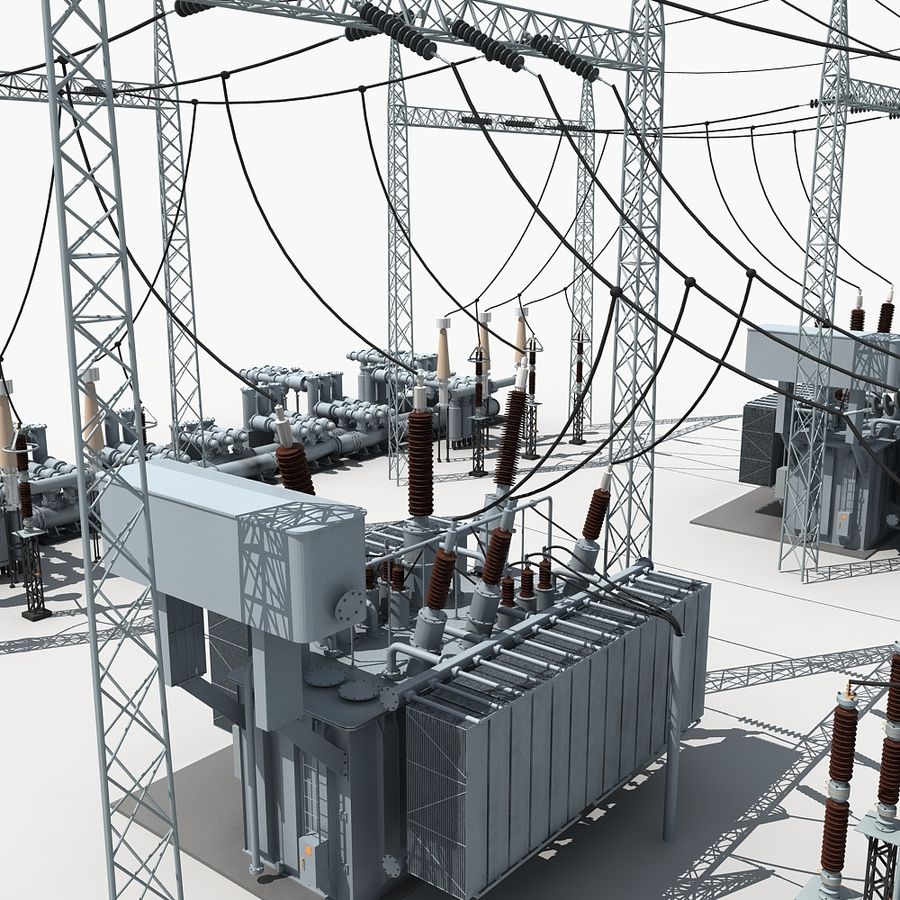
The production sector includes a wide range of power plants with different power and efficiency. In electrical energy transmission networks, due to many reasons, including safety, economic reasons, and most importantly, the distance of energy production sources from consumers, power plant production units are located in areas far from consumption centers. The output voltage of the generator of different power plants is different and reaches about 25 kV in its maximum state. The frequency of these generators is also set in two values of 50 or 60 Hz in all countries.

Electric energy distribution systems consist of three parts: distribution post, primary distribution system and secondary distribution system. The task of the distribution substation is to receive power from the transmission system and deliver it to the distribution system. In these posts, at least two power supply lines are used as the input of this post, and the value of this voltage depends on the standard of each country.

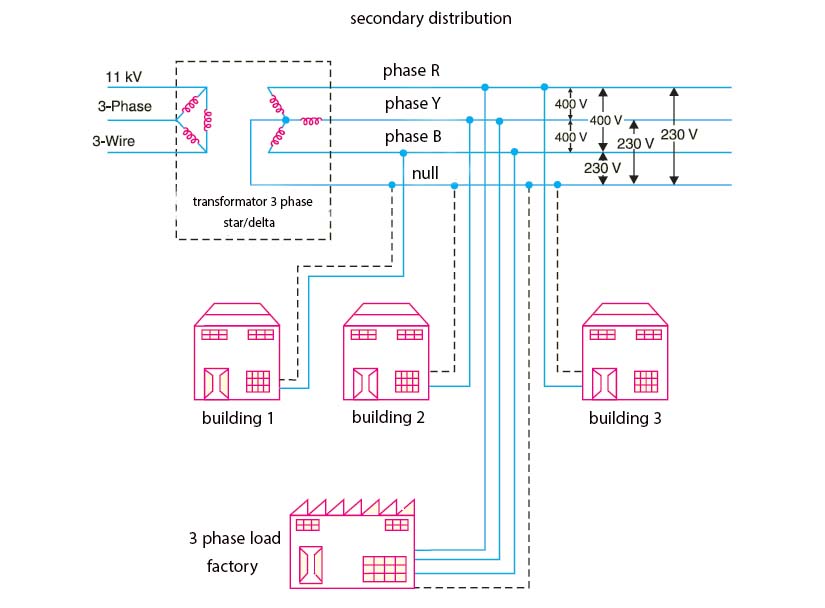
Electricity distribution stations are operated in two types, ground and aerial. Determining the maximum voltage drop, choosing the type of conductor, determining the level of short circuit and current carrying capacity are among the design criteria of this type of substation.
Ground distribution post
The conventional type of ground distribution substation is designed with two cells. In the first cell, in order to protect against short circuit and overload, for currents up to 30 amps, disconnectable disconnector under load is used, and for currents over 30 amps, a degenerator equipped with a primer relay (without current transformer) is used. The second cell is called the measuring cell, in which 2 or 3 voltage transformers with an output of 100 or 110 volts (line voltage) are installed. It is mandatory to use a dry transformer in underground substations, and it is forbidden to use its upper space in order to build green spaces and fountains. Ground distribution posts are designed in 6 different types according to the application.
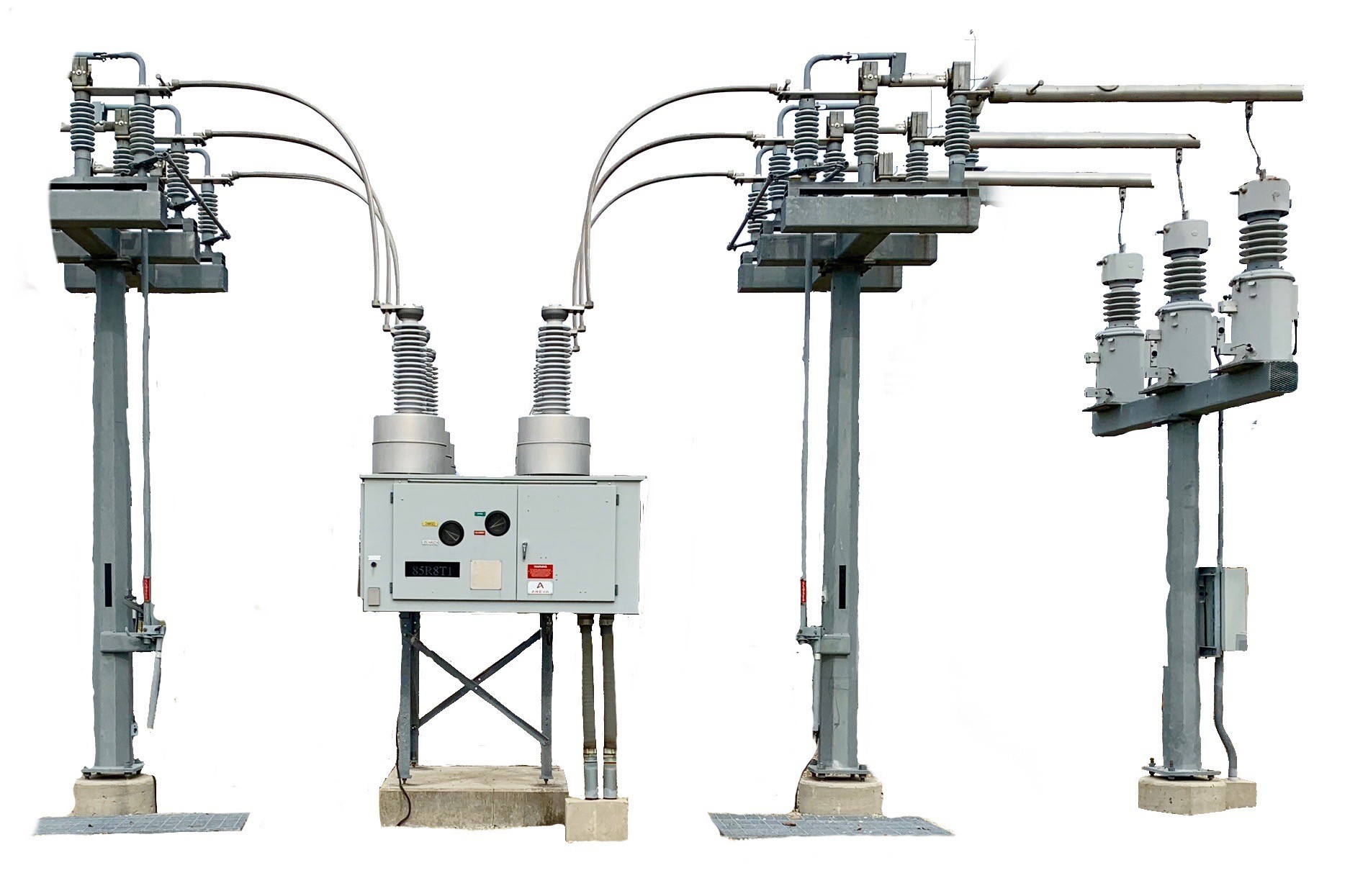
1-General electricity substation
The public substation can be used to supply electricity to domestic, commercial, and other customers. Today, it is necessary to predict these posts for applicants with a demand of less than 250 kW. The dimensions of these posts are suggested as 8 x 6 meters.
2- Dedicated electricity substation
In order to hand over electricity distribution to applicants with primary voltage demand and power greater than 250 kilowatts, a dedicated electricity substation is used. In this post, measuring devices including current transformers, voltage and active and reactive meters are also installed. This post, like the general type, is recommended in dimensions of 8 x 6 meters.
3- General substation - exclusive electricity
This post will be built in the proposed dimensions of 8 x 11 meters and in two completely separate parts. One part of this substation is designed to supply public needs (customers with a demand of more than 30 kW and less than 250 kW) and the other part is designed to supply the primary voltage of customers with a demand of more than 250 kW. This post is actually a combination of a public post and a private post.
4- Passage post
If the distance between the place of consumption and the place of electricity delivery is long, only the primary voltage measurement equipment (20 kV) is installed in a substation with dimensions of approximately 6 x 4 meters, and a dedicated transformer is installed in a place close to the place of consumption, to which, It is called a passage post.
5- Electricity distribution station
In the direct power substation, one or more 20 kV feeders are divided into several 20 kV branches. For example, two input feeders become five output feeders. The dimensions of this post are determined according to the position and number of feeders. In fact, in determining the dimensions of the ground posts, if the given sizes cannot be taken into account, the design should be done in two floors or with respect for privacy.
6- Compact prefabricated electrical substations (kiosk)
These posts are easily portable and their operation time is short. Also, simplicity and safety in the use of other features of these types of posts are considered. The ground system of these types of posts is like the ground posts. The use of these substations in the capacity of 250-500, 500-315 and 630-800 kVA is allowed in ring form with dry or hermetic transformer.
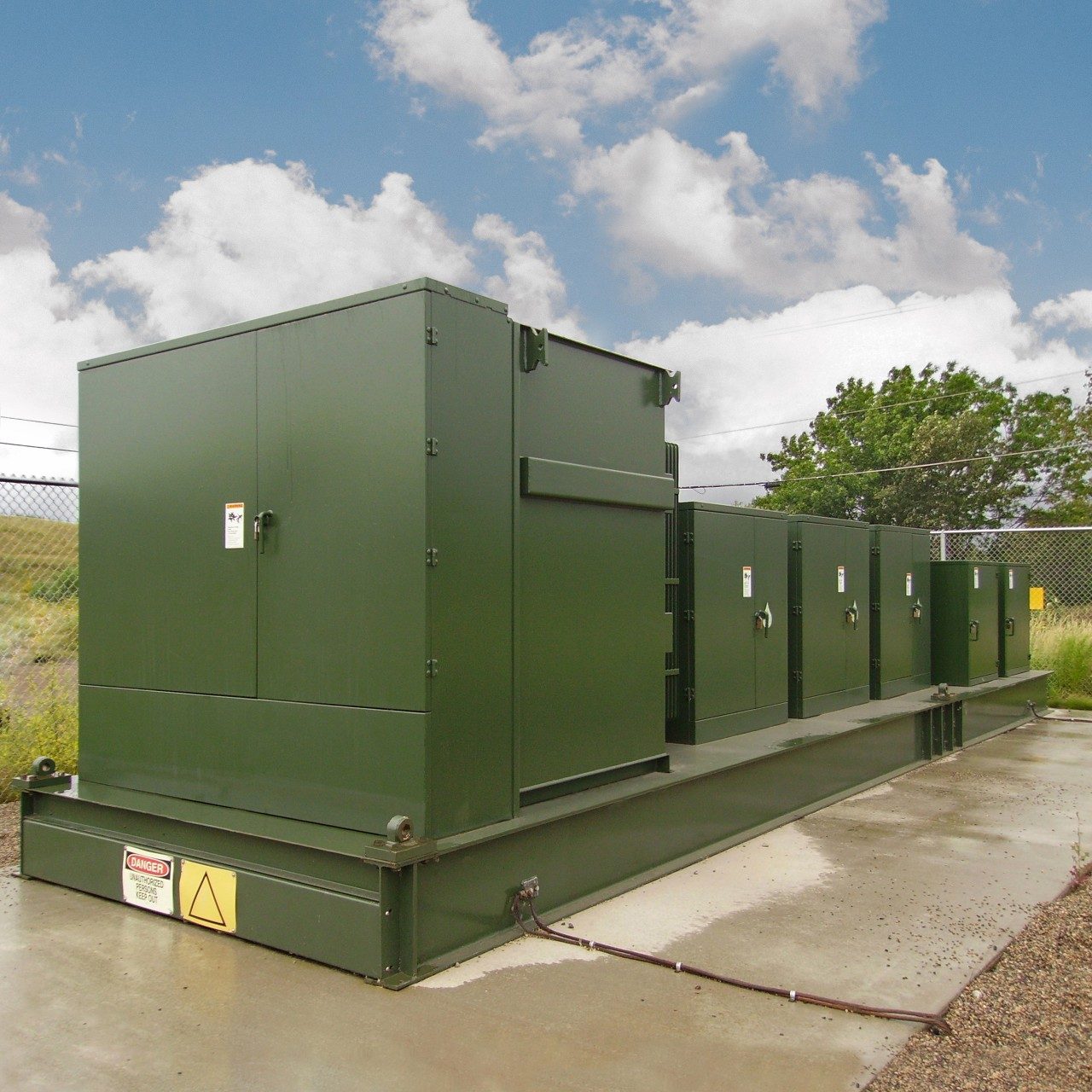
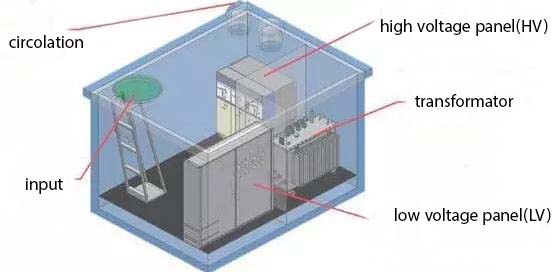
Electric substation equipment
The following items can be mentioned from the equipment used in the power station.
the switch
The first task of an electrical substation can be considered switching. The act of switching in an electrical substation means connecting multiple facilities.
bass
Connections between installations where order is important are made by busbars, busbars are protected by large isolators to prevent sparks from short connections.
Separator keys
Isolating switches are used when we have a technical failure and it is necessary to remove a part from the circuit. Switching is a specialized and very sensitive work.
Switchgear
This switch consists of current transformers, voltage transformers, busbars and SF6 disconnecting switches, etc., and connects busbars to feeders or busbars to busbars.
Recloser key
These keys work when a temporary error occurs, such as lightning, and cuts off the power for a short time, then reconnects the power to check whether the error has been resolved or to determine whether the error is permanent or temporary. . Open and close switches are opened and closed several times according to the settings that are defined for them to ensure that the error is permanent or temporary, and if the error is permanent, they must cut the circuit completely.
Step-down and step-up transformers
Step-down transformers are used to lower the voltage and increase the current, and step-up transformers are used to increase the voltage and decrease the current, for this reason, these transformers are used when transferring electrical energy along the way from power plants (where energy is produced) to consumption centers may be sent transmission with different current intensity and voltage, which results in power fluctuations and voltage drop. Such fluctuations in the power station are prevented by the transformations performed by step-up and step-down transformers.
Types of electrical substation switches
fuses
Fuses are used to prevent short-circuit errors, but fuses are disposable and melt after the short-circuit current is cut off, and they cannot detect other errors.
Automatic keys
Unlike fuses, automatic switches are not disposable, which means they can interrupt very high currents and voltages, and they can also be used to diagnose many errors.
Automatic air switches
These switches are located in the air chamber and are used at low voltage, which works in such a way that the electric current is not established by the air insulation between the contacts.
circuit breaker
In high voltage, degenerators or circuit breakers are used instead of air automatic switches. These automatic switches are immersed in large tanks that are filled with non-conductive oils or dense dielectric gas, and by using this type of switch, operators have more control over They have on when the current is cut off and how it is cut off.
Instrument transformers
Instrument transformers are used to feed monitoring systems, measure voltage or network current, which are small transformers. Like CT, which is used to measure trans.
Regulators
Regulators are used to adjust the distribution voltage in the supply lines, which go from the producer to the consumer. This prevents voltage drop.
bushing
When connecting equipment together, we use bushings to create safety between them, as well as to create safety between energy lines and the metal grounded enclosure.
Fence and concrete walls
Fence: Fences are used to protect people's lives and define the boundary for the substation area.
Concrete wall: In some substations, long concrete walls are used to prevent fire between equipment.
How to generate and transmit electricity
The operation of the power station can be divided into three parts (in order) for the ease of explanation: generation, transmission, distribution. In fact, the electrical substation connects all the components of these three sectors together.
Power generation: Power generation by power plants goes to the transmission sector for further processes.
Power transmission: Power transmission from power plants to distribution sections is done in this part of the power station.
Electricity distribution: In this part, electricity distribution is carried out nationwide for all consumers by the electricity substation.
Designing all types of electrical substations
In the following, we will examine the important points that should be considered in the basic design and operation of the electrical substation, which are under the branch of the electrical network.
In the design and operation of the power station, information including atmospheric and environmental information such as wind speed, temperature, height above sea level and the possibility of natural disasters such as earthquakes, etc., as well as electrical information such as rated voltage, rated current, transient and temporary overvoltages should be included. and so on, obtaining this information is done in order to be able to design and operate the desired power station according to the existing standards, the standards in different countries will be different according to the conditions and facilities available in that country.